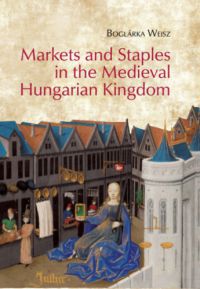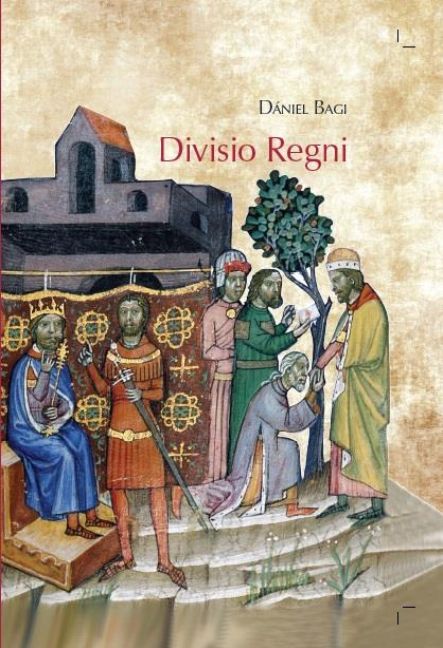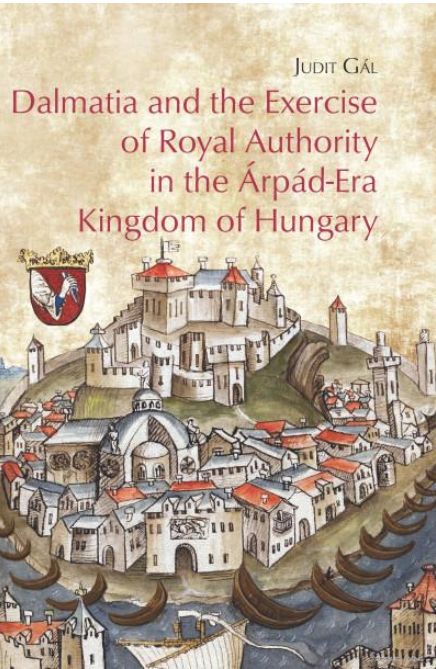The Kingdom of Hungary in the Árpád era does not take its place in the historical memory as it should deserve. Yet a deeper knowledge of this bright period in the Hungarian history could be an important element of a modern European and Hungarian identity. The Hungarian government wished to facilitate this by adopting the regulation 1832/2013. (XI. 15.) on the Árpád Dynasty Program and related development sub-programs (2013–2038). An Operational Board was set up to elaborate the project, led by Director General of the Research Centre for the Humanities, Pál Fodor. The Board, with the involvement of the leading researchers of the period, developed the Árpád Dynasty Program within a few months, the implementation of which started in 2018.
The program focuses on the preservation, presentation and development of the national memorial site in Székesfehérvár, but it also provides intense support for historical, philological, archaeological, archaeogenetic, etc. research, which enables a more thorough knowledge and presentation of the Árpáds – and the Árpád era in a broader sense. To communicate the results to an international audience, a new English-language series entitled Arpadiana was launched last year by the Research Centre for the Humanities (editors: Pál Fodor and Attila Zsoldos). This article presents the first four volumes published so far.
Weisz, Boglárka: Markets and Staples in the Medieval Hungarian Kingdom (Arpadiana 1.)
 This book discusses medieval markets and depots, places of commercial activity in the Kingdom of Hungary, and their many interactions, and how they developed and changed over time. The system went through many changes as new demands arose over the centuries, but permanence and characteristic feature. In the early Kingdom of Hungary only the king could hold markets, but clerical and secular landowners gradually aquired market rights in later times. The only prerogative retained by the king was the power to grant a franchise for a market.
This book discusses medieval markets and depots, places of commercial activity in the Kingdom of Hungary, and their many interactions, and how they developed and changed over time. The system went through many changes as new demands arose over the centuries, but permanence and characteristic feature. In the early Kingdom of Hungary only the king could hold markets, but clerical and secular landowners gradually aquired market rights in later times. The only prerogative retained by the king was the power to grant a franchise for a market.
Kings may have created the institutional basis for trade, but markets followed their own course of development in the way operated.
Bibliographic data: Weisz, Boglárka: Markets and Staples in the Medieval Hungarian Kingdom. (Arpadiana 1.) Budapest, 2020. Institute of History, Research Centre for the Humanities ISBN: 978-963-416-199-8. 258 pages.
Bagi, Dániel: Divisio Regni. The territorial divisions, power struggles, and dynastic historiography of the Árpáds of 11th- and early 12th-century Hungary, with comparative studies of the Piasts of Poland and the Přemyslids of Bohemia (Arpadiana 2.)
 Hungarian historians have always been particularly fascinated by the throne feuds of their 11th- and 12th-century Árpád rulers. The original division of the Kingdom of Hungary, the disputes between King Solomon and his cousins, Dukes Géza and Ladislaus, and the struggle between King Coloman the Learned and his brother Duke Álmos have left a deep impression on Hungary’s national memory, inspiring literary classics, modern screenplays, and scholarly studies like Divisio Regni, in which Dániel Bagi examines Hungary’s 11th- and 12th-century dynastic conflicts against the backdrop of their broader Central European context, including comparable conflicts in Poland, Bohemia and Moravia, and the Holy Roman Empire. The book’s Latin title („the division of a kingdom”) comes from a passage of scripture which was regularly cited in the Middle Ages, during which time this phrase conveyed two important shades of meaning. While literally referring to geographical divisions and the throne feuds associated with them, it could also connote general civil strife, dissension, and the state of discord created by rival claimants to the throne.
Hungarian historians have always been particularly fascinated by the throne feuds of their 11th- and 12th-century Árpád rulers. The original division of the Kingdom of Hungary, the disputes between King Solomon and his cousins, Dukes Géza and Ladislaus, and the struggle between King Coloman the Learned and his brother Duke Álmos have left a deep impression on Hungary’s national memory, inspiring literary classics, modern screenplays, and scholarly studies like Divisio Regni, in which Dániel Bagi examines Hungary’s 11th- and 12th-century dynastic conflicts against the backdrop of their broader Central European context, including comparable conflicts in Poland, Bohemia and Moravia, and the Holy Roman Empire. The book’s Latin title („the division of a kingdom”) comes from a passage of scripture which was regularly cited in the Middle Ages, during which time this phrase conveyed two important shades of meaning. While literally referring to geographical divisions and the throne feuds associated with them, it could also connote general civil strife, dissension, and the state of discord created by rival claimants to the throne.
This volume is an attempt to analyze the dynastic conflicts of the 11th and 12th centuries from both these perspectives, providing detailed accounts of their historical backgrounds and immediate causes, comparative discussions of territorially distinct specific systems of administration, and critical assessments of the historically distinct notions of social relationships which framed the perceptions of the authors who recorded these throne feuds in the original sources.
Bibliographic data: Bagi, Dániel: Divisio Regni. The territorial divisions, power struggles, and dynastic historiography of the Árpáds of 11th- and early 12th-century Hungary, with comparative studies of the Piasts of Poland and the Přemyslids of Bohemia. (Arpadiana 2.) Budapest, 2020. BTK ISBN: 978-963-416-206-3. 408 pages.
Gál, Judit: Dalmatia and the Exercise of Royal Authority in the Árpád-Era Kingdom of Hungary (Arpadiana 3.)
Although Hungary and Croatia are bonded together by 800 years of common statehood, many questions about the two countries' shared history are still unanswered.

The place of the Dalmatian towns in the medieval Kingdom of Hungary and their relationship with the kings are among these unexplored fields of the Hungarian-Croatian past. This volume focuses on the beginnings of the common statehood and analyzes the place of the Dalmatian towns in the Hungarian Kingdom through the lens of the exercise of the Hungarian royal authority. The book guides the readers through several aspects of this relationship to show how the Hungarian royal court maintained its authority over the towns and who were the representatives of the kings of Hungary in Dalmatia. Judit Gál works at the Institute of History of the Research Centre for the Humanities and her main field of interest is the relationship between Hungary and the Balkans between the 11th and 15th centuries.
Bibliographic data: Gál, Judit: Dalmatia and the Exercise of Royal Authority in the Árpád-Era Kingdom of Hungary. (Arpadiana 3.) Budapest, 2020. BTK Történettudományi Intézet ISBN: 978-963-416-227-8. 228 pages.
Zsoldos, Attila: The Árpáds and Their People (Arpadiana 4.)
 The aim of this book is to present the history of the Árpád era. The method applied here differs significantly from the traditional approach of following the chronological order of events, however. The period is presented not as a linear narration of events, but rather in the light of the society of the time. The introductory chapters are followed by chapters portraying a broad range of typical figures of the age, from the king down to the servants and the free peasants. All the knowledge of the full history of the Árpád period that can be expected to be included in a work of such a size has found its place in this social historical overview.
The aim of this book is to present the history of the Árpád era. The method applied here differs significantly from the traditional approach of following the chronological order of events, however. The period is presented not as a linear narration of events, but rather in the light of the society of the time. The introductory chapters are followed by chapters portraying a broad range of typical figures of the age, from the king down to the servants and the free peasants. All the knowledge of the full history of the Árpád period that can be expected to be included in a work of such a size has found its place in this social historical overview.
Attila Zsoldos is a full member of the Hungarian Academy of Sciences. He works at the Institute of History of the Research Centre for the Humanities (Budapest, Hungary). His main fields of interest are the social and political history and the institutions of 11–14th century Hungary.
Bibliographic data: Zsoldos, Attila: The Árpáds and Their People. (Arpadiana 4.) Budapest, 2020. BTK Történettudományi Intézet ISBN: 978-963-416-226-1. 266 pages.
The Hungarian translation of this article is available here.

